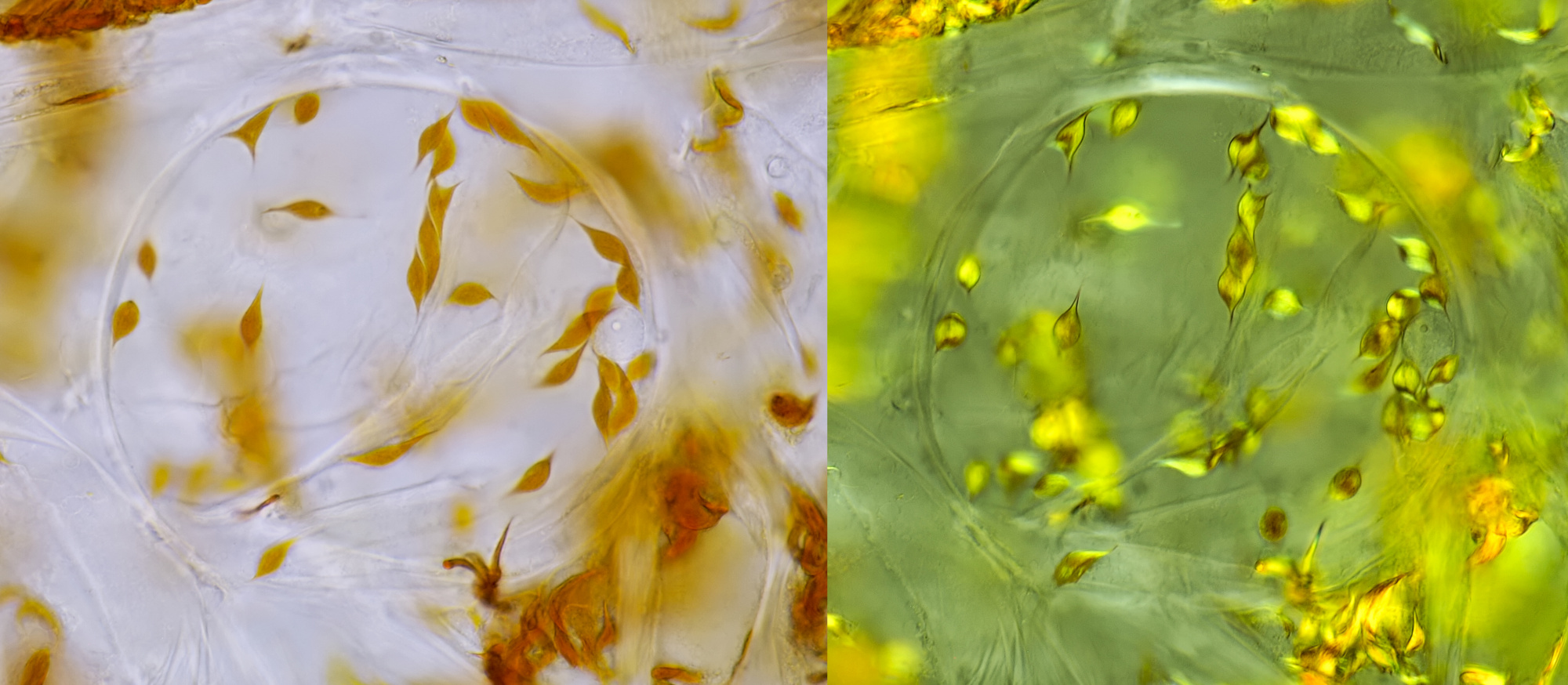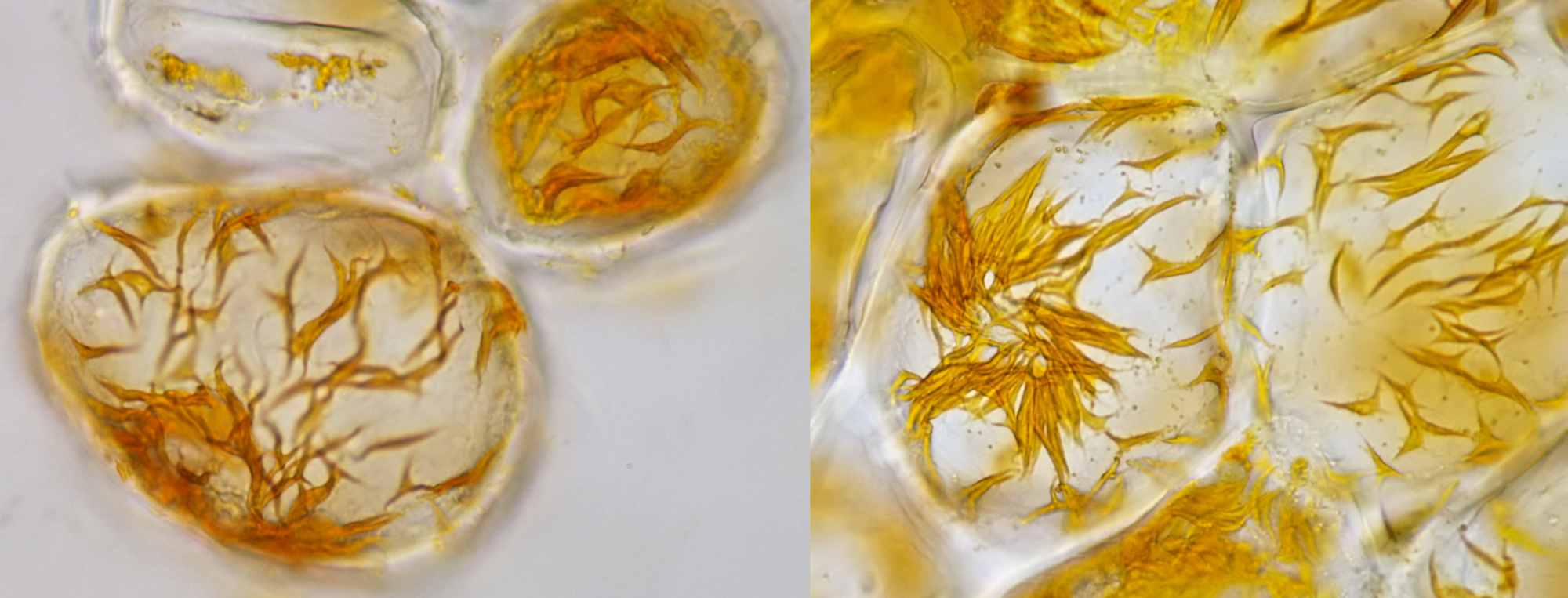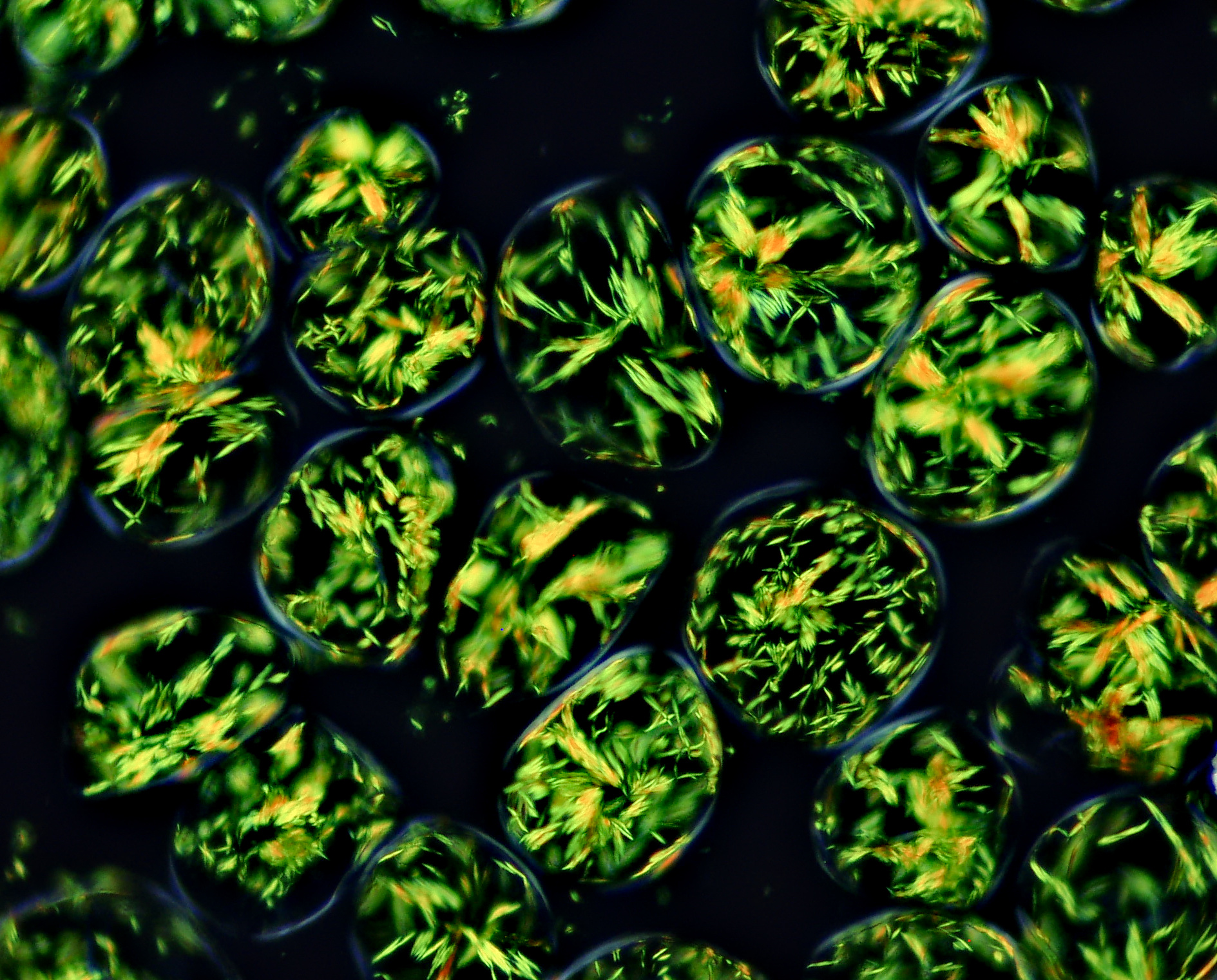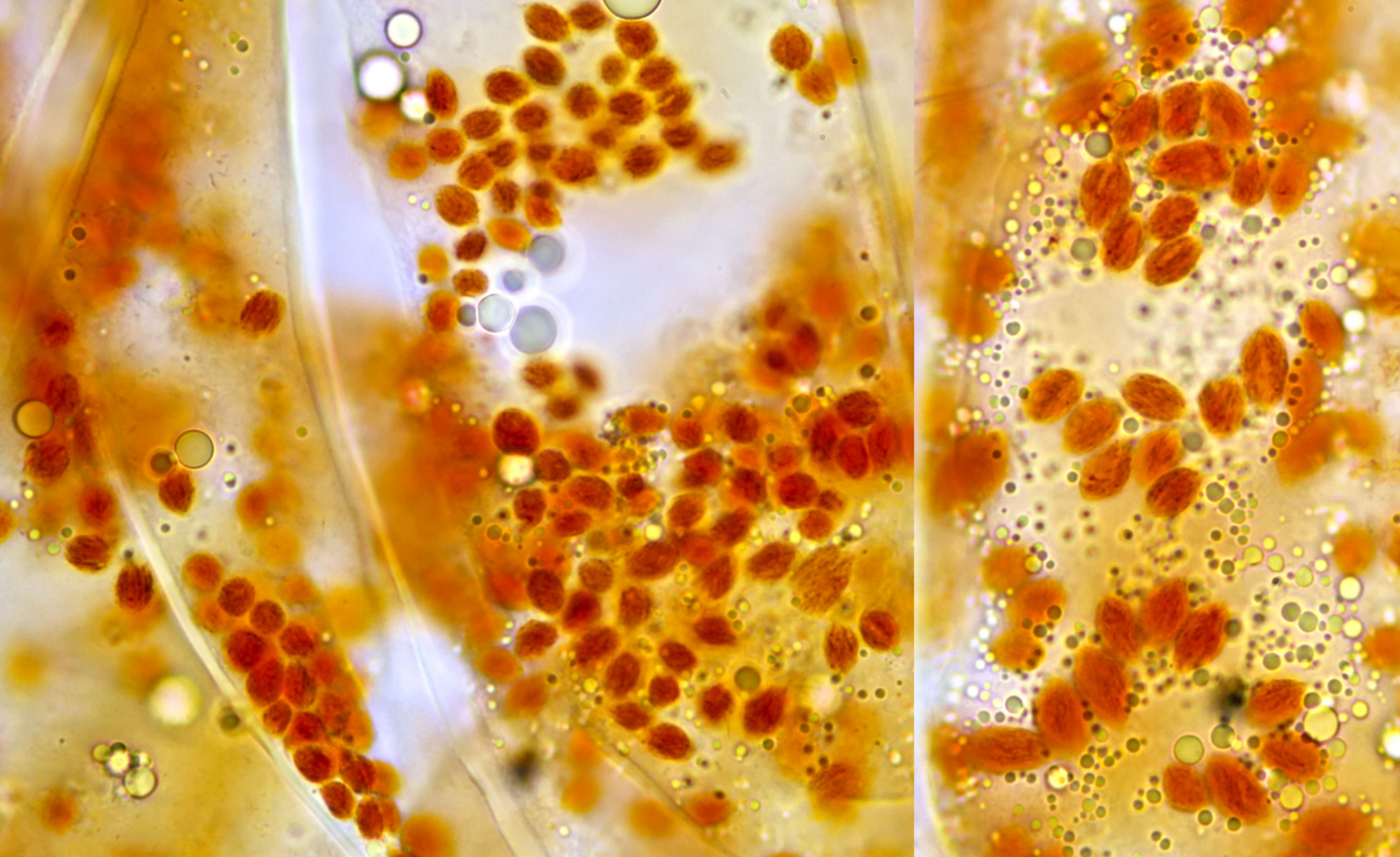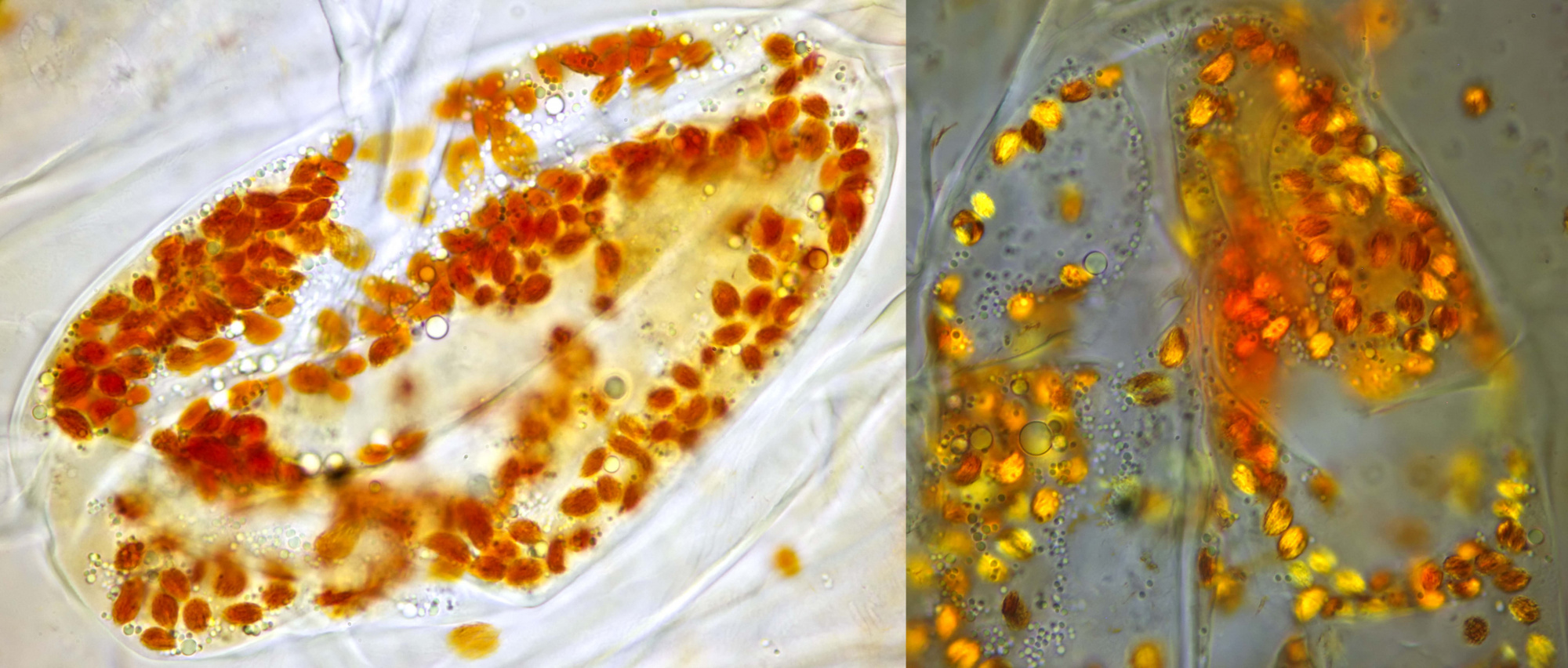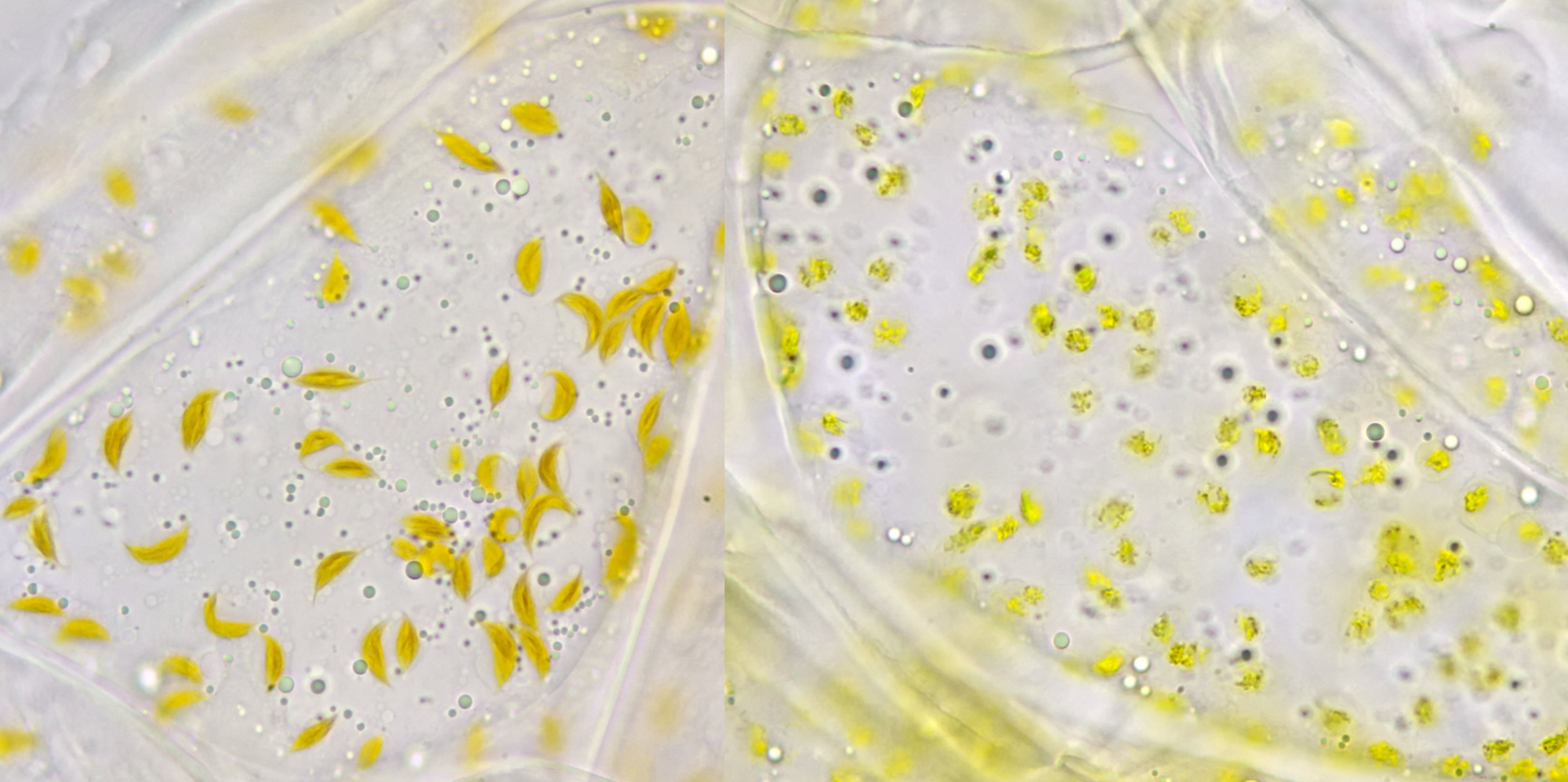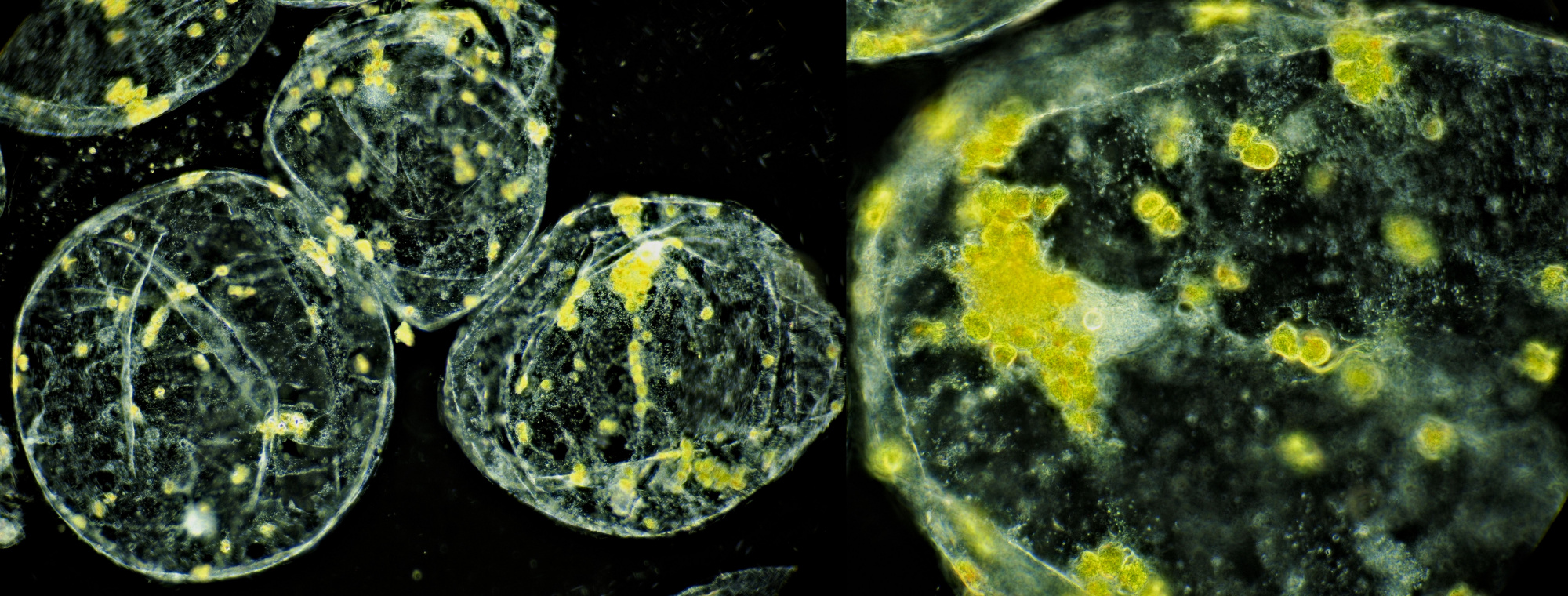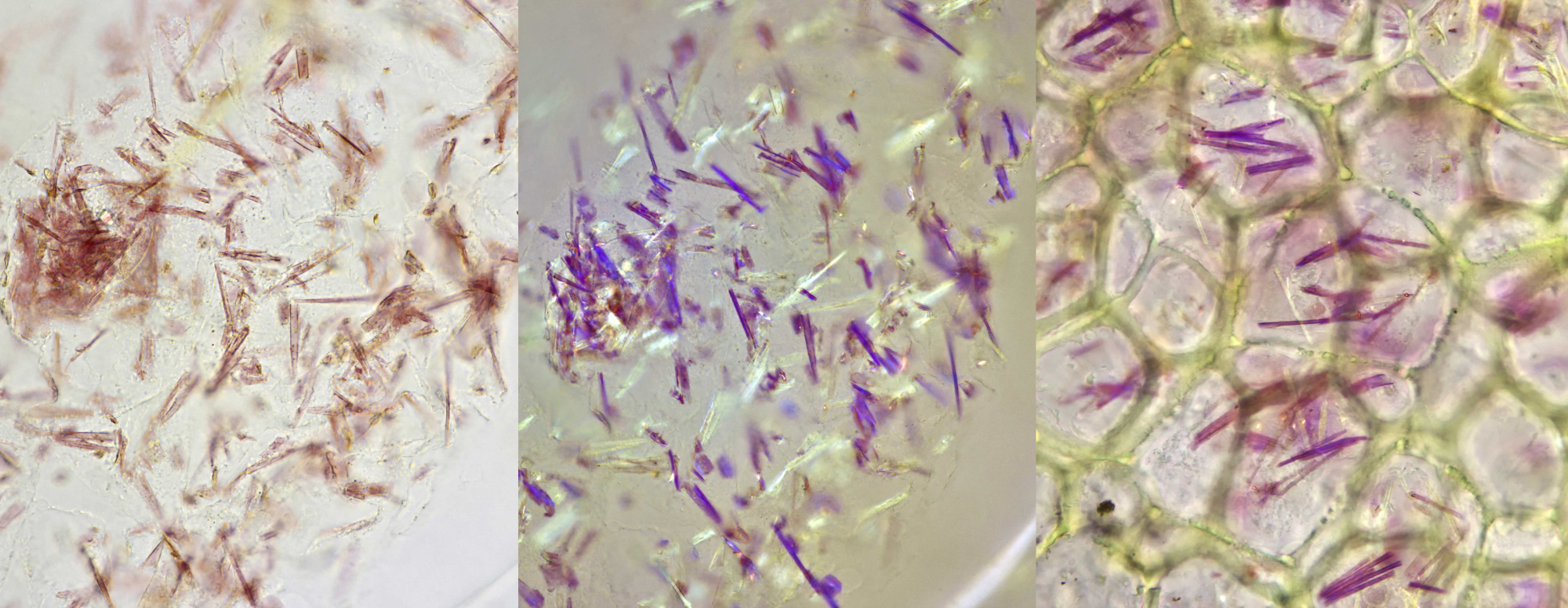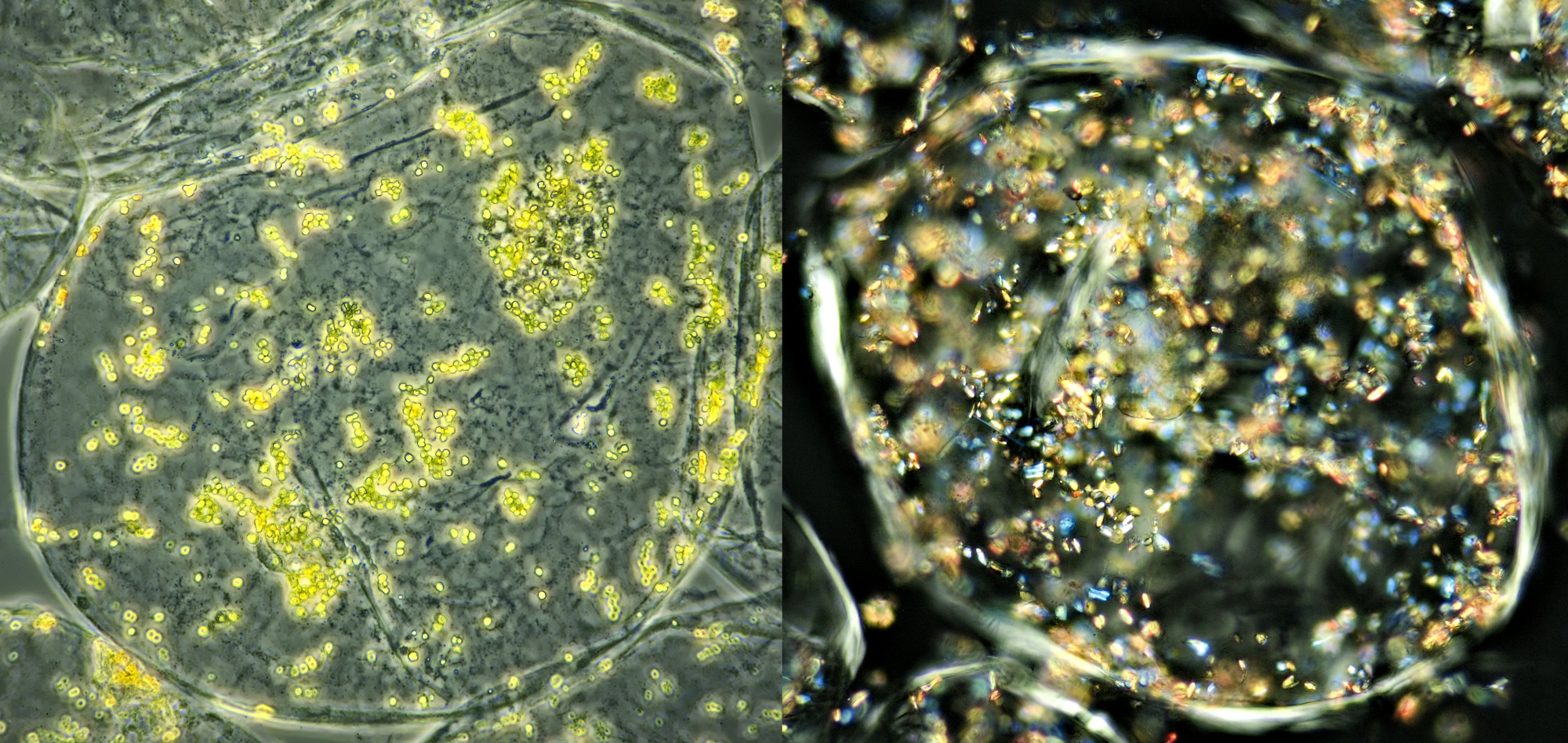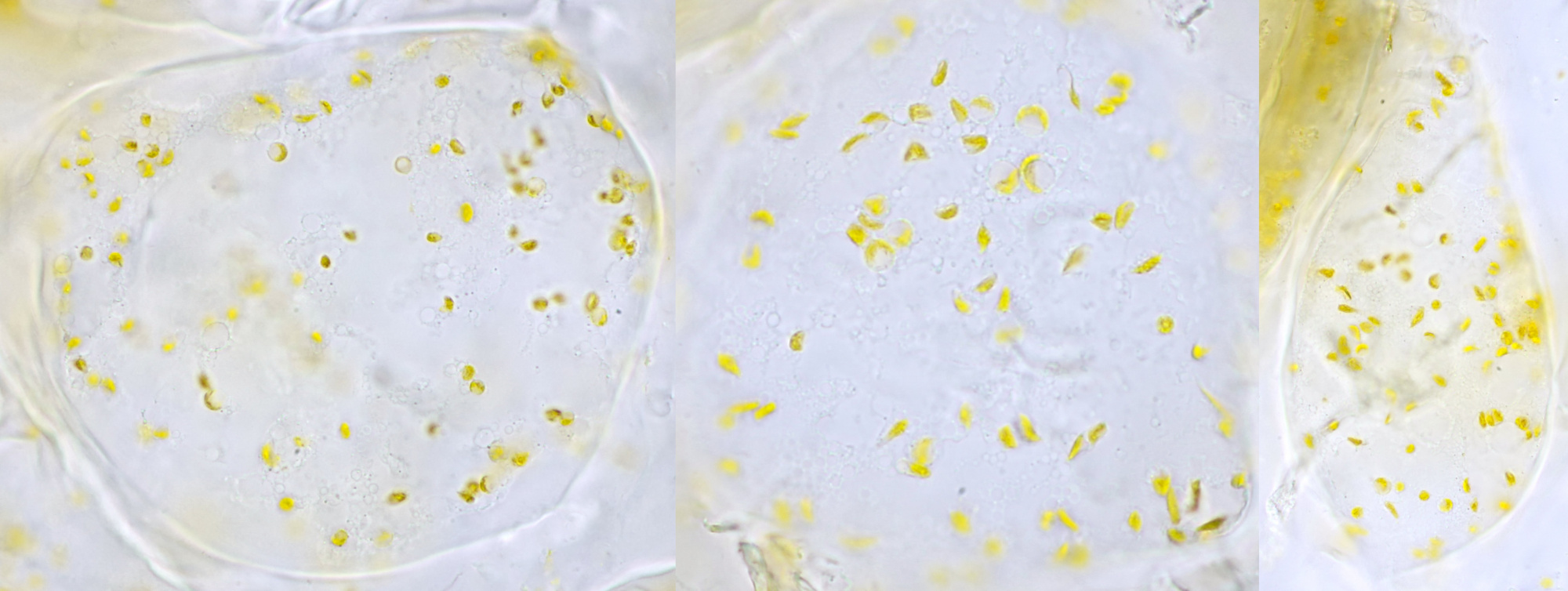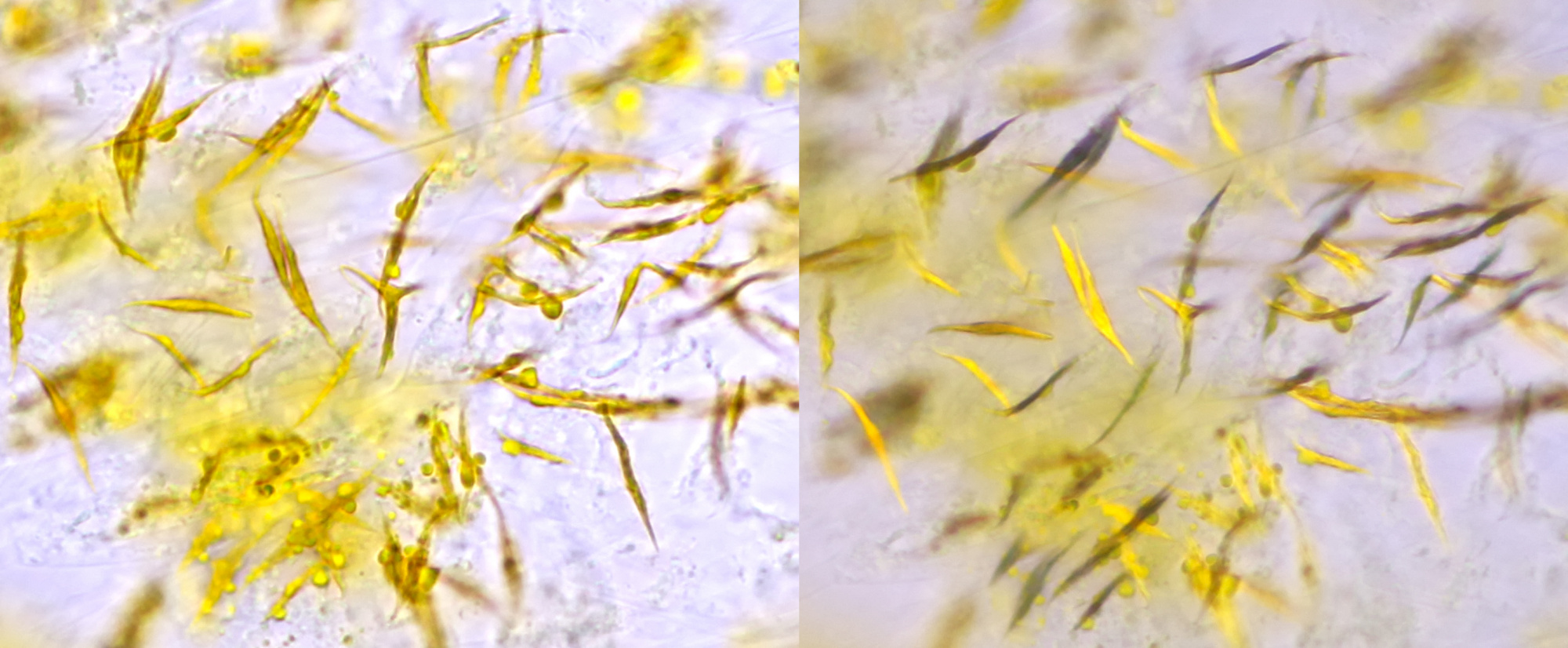
The wide variety of colours in flowers and fruits is largely caused by pigment containing organelles called chromoplasts. Chromoplasts belong to a dynamic group of organelles called plastids and they are responsible for the bright red, orange and yellow colours in many fruits and flowers. With these colours, plants attract pollinators and other animals that help spreading their seeds. During the ripening of fruits, chloroplasts develop into chromoplasts through the formation of carotenoids. The carotenoid pigments are devided into two groups: the carotenes (orange) and xanthophylls (yellow to red). The orange color of carrot for example is caused by beta-carotene, a carotenoid pigment that is converted in the human body into vitamin A. The xanthophylls are responsible for the moody colours of leaves in the autumn and they are formed in a different kind of plastid called gerontoplast.
Chromoplasts are very variable, in different plant species and cell types they can have different shapes and sizes. In paprika, for example, the chromoplasts are mainly round or oval shaped while crystalline chromoplasts are seen in de cells of tomato. In rose hip we see very irregular shaped chromoplasts.
Rose Hip
It is easy to prepare a microscope slide from the pulp of a ripe rose hip by scraping off some material on the underside of the peel.
Cell from the pulp of a rose hip containing chromoplasts. The nucleus in the cell is also visible, located on the far right against the cell wall. Pictures were taken with bright field illumination (left) and polarized light (right). Objective: Carl Zeiss Apo 40/1.0.
Irregularly shaped chromoplasts in the cells from rose hip. Objective: Carl Zeiss Neofluar 40/0.75.
Cells from the pulp of rose hip photographed in polarized light. Objective: Leitz 25/0.50.
Paprika
In paprika, red and yellow chromoplasts are found. Here too we see different shapes, usually round or oval and sometimes they have the shape of a donut.
Chromoplasts in cells of a red paprika. Objective: Carl Zeiss 100/1.25.
Chromoplasts in a cell of a red paprika photographed in brightfield illumination (left) and polarised light (right). Objective: Carl Zeiss 100/1.25.
Chromoplasts in orange (left) and yellow (right) mini-paprika. Objective: Carl Zeiss Neofluar 63/1.25.
Tomato
In tomatoes, we see yellow and red chromoplasts. Often, lycopene or beta-carotene is accumulated as a crystal in these chromoplasts. These are called crystalline chromoplasts.
Darkfield illumination revealing chromoplasts in tomato cells. Objectives: Carl Zeiss Neofluar 16/0.40 (left) and Carl Zeiss Apo 40/1.0 (right).
Crystalline chromoplasts in the cells of the pulp and skin of the 'Rivolo' cherry tomato. The first image was taken in brightfield with objective Carl Zeiss Apo 40/1.0. The middle image (objective Carl Zeiss Apo 40/1.0 ) and last image (Carl Zeiss Neofluar 63/1.25) were taken with polarized light.
Chromoplasts in tomato cells imaged in phase contrast (left, Zeiss-Winkel objective 25/0.45 Ph2) and polarised light (right, Carl Zeiss Neofluar objective 25/0.60).
Persimmon
And then there is the persimmon, a plant with a somewhat unusual fruit whose origins lie in Asia. The chromoplasts in the cells of the pulp are more or less similar to those found in rose hips and paprikas.
Chromoplasts in the cells of persimmon. Objective: Carl Zeiss Neofluar 63/1.25.
Chromoplasts in the cells of persimmon. Objective: Carl Zeiss Apo 40/1.0.
Mandarin
The chromoplasts in the cells of mandarin pulp look like elongated strands.
Chromoplasts in the cells of mandarin. Photographed in brightfield (left) and in polarised light (right). Objective: Carl Zeiss Neofluar 63/1.25.
Chromoplasts in the cells of mandarin photographed in polarised light. Objective: Carl Zeiss Neofluar 63/1.25.
Literature
Egea I, Barsan C, Bian W, et al. Chromoplast differentiation: current status and perspectives. Plant & Cell Physiology. 2010 Oct;51(10):1601-1611. DOI: 10.1093/pcp/pcq136. PMID: 20801922.
Sadali N, Sowden R, Ling Q, Jarvis P (2019). Differentiation of chromoplasts and other plastids in plants. Plant Cell Reports. 38:803-818.
